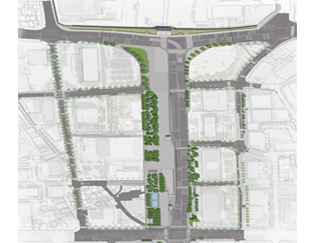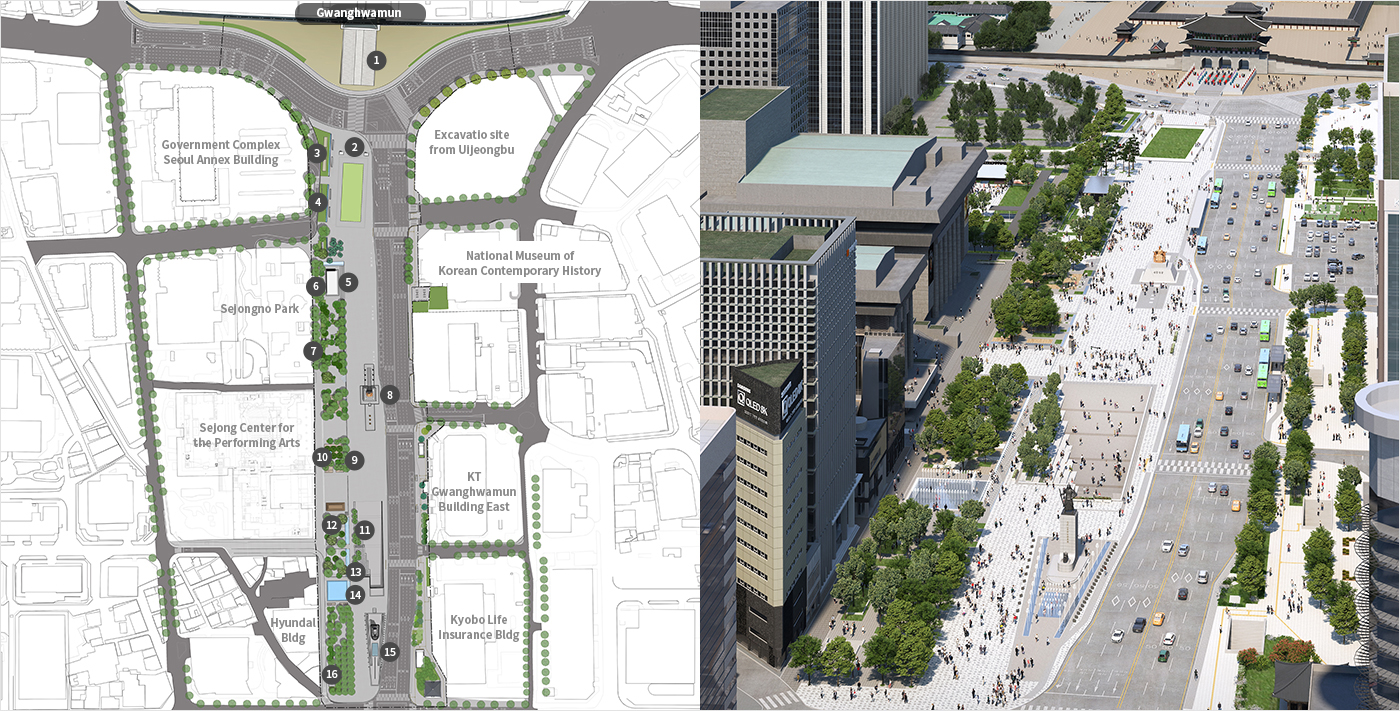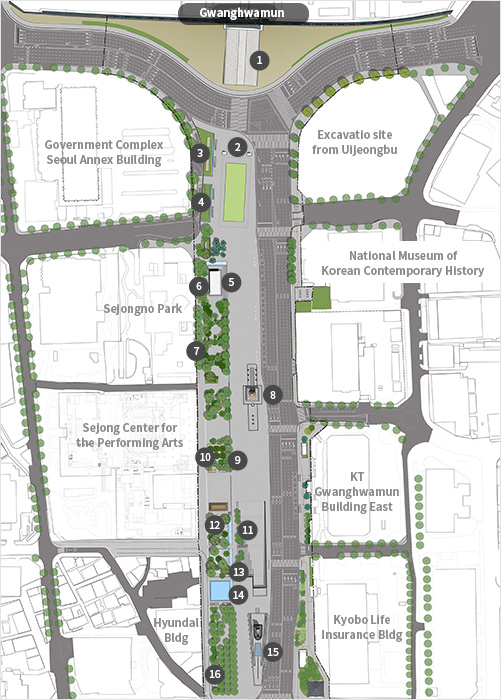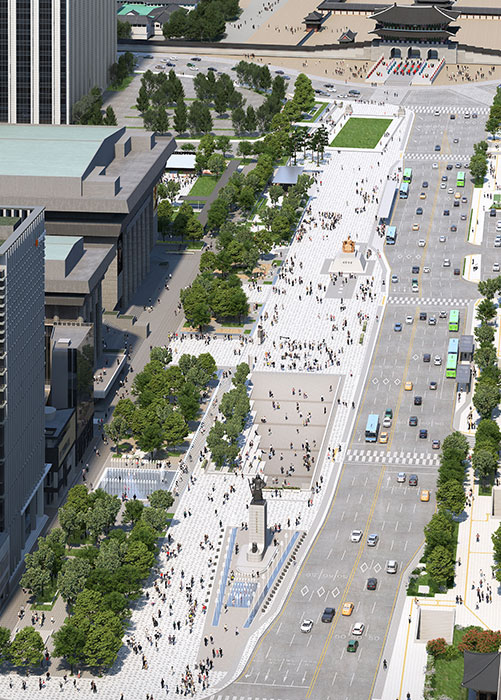| Category | Civic square | Historical square |
| Road layout | Sajik-ro: Preserved routes (T-shape) Sejong-daero: Public square in the west and roadway in the east | Sajik-ro: Preserved routes (Y-shape) Sejong-daero: Public square in the west and roadway in the east |
|---|---|---|
| Area | 26,200㎡ | 14,100㎡ |
| Expenses | KRW 61 billion | KRW 20.5 billion |
| Details | Flagstone paving, tree planting, Haechi Lounge renovation, installation of water features, renovation of Sejongno Park, etc. | Flagstone paving, landscaping, construction of detours, etc. |
| Construction | Nov. 2021 – First half of 2022 | Oct. 2021 – Dec. 2023 |
| Historic significance | Specialization of historical and cultural content, such as the statues of Admiral Yi Sun-sin and King Sejong | Restoration of cultural heritage (Woldae of Gwanghwamun and Haechi statues) |
| Layout |  |  |
| Category | Civic square |
| Road layout | Sajik-ro: Preserved routes (T-shape) Sejong-daero: Public square in the west and roadway in the east |
|---|---|
| Area | 26,200㎡ |
| Expenses | KRW 61 billion |
| Details | Flagstone paving, tree planting, Haechi Lounge renovation, installation of water features, renovation of Sejongno Park, etc. |
| Construction | Nov. 2021 – First half of 2022 |
| Historic significance | Specialization of historical and cultural content, such as the statues of Admiral Yi Sun-sin and King Sejong |
| Layout |  |
| Category | Historical square |
| Road layout | Sajik-ro: Preserved routes (Y-shape) Sejong-daero: Public square in the west and roadway in the east |
| Area | 14,100㎡ |
| Expenses | KRW 20.5 billion |
| Details | Flagstone paving, landscaping, construction of detours, etc. |
| Construction | Oct. 2021 – Dec. 2023 |
| Historic significance | Restoration of cultural heritage (Woldae of Gwanghwamun and Haechi statues) |
| Layout |  |
Promotion of historical significance based on restoration and active use of cultural heritage
Promotion of historical significance based on restoration and active use of cultural heritage
Restoration of Woldae of Gwanghwamun and Haechi statues which have been damaged by the passage of time
Public display of the archaeological features of the Yukjo site, which included Samgunbu and Saheonbu offices as well as the offices of the six ministries of the Joseon dynasty, and reconstruction of their superstructures
Highlighting the stories about history and culture of the site
Highlighting the stories about history and culture of the site
Creation of Hangeul-themed spaces and facilities, including Hangeul Fountain, across the square, promoting Hangeul-based puzzle-solving activities
Creation of Time Waterway that links the past and present
Installation of commemorative steles (safety bollards) symbolizing the Yi Sun-sin’s twelve battleships and victories
Increase of public understanding of the King Sejong’s achievements by improving the entrance to The Story of King Sejong behind the statue
Enhanced connections between the square and its surroundings
Enhanced connections between the square and its surroundings
Improved connection between the square and its surroundings for the vitalization of urban spaces
(e.g. creation of urban green spaces and open-space areas)
Installation of public amenities at the square’s connection spaces
Renovation of the Uijeongbu site for the creation of the historical and cultural space linking Gwanghwamun Square and Gyeongbokgung Palace
Renovation of the lower floors of Sejong Center for better connectivity with the square


